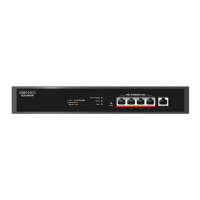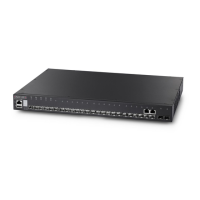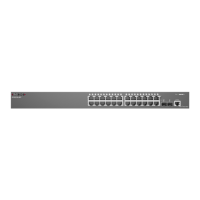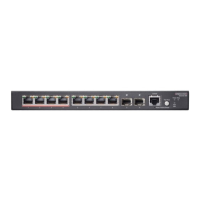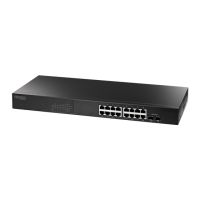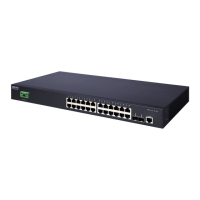C
HAPTER
17
| Multicast Filtering
Layer 2 IGMP (Snooping and Query)
– 472 –
device, most commonly a multicast router. In this way, the switch can
discover the ports that want to join a multicast group, and set its filters
accordingly.
If there is no multicast router attached to the local subnet, multicast traffic
and query messages may not be received by the switch. In this case (Layer
2) IGMP Query can be used to actively ask the attached hosts if they want
to receive a specific multicast service. IGMP Query thereby identifies the
ports containing hosts requesting to join the service and sends data out to
those ports only. It then propagates the service request up to any
neighboring multicast switch/router to ensure that it will continue to
receive the multicast service.
The purpose of IP multicast filtering is to optimize a switched network’s
performance, so multicast packets will only be forwarded to those ports
containing multicast group hosts or multicast routers/switches, instead of
flooding traffic to all ports in the subnet (VLAN).
You can also configure a single network-wide multicast VLAN shared by
hosts residing in other standard or private VLAN groups, preserving
security and data isolation "Multicast VLAN Registration" on page 493.
LAYER 2 IGMP (SNOOPING AND QUERY)
IGMP Snooping and Query – If multicast routing is not supported on other
switches in your network, you can use IGMP Snooping and IGMP Query
(page 474) to monitor IGMP service requests passing between multicast
clients and servers, and dynamically configure the switch ports which need
to forward multicast traffic. IGMP Snooping conserves bandwidth on
network segments where no node has expressed interest in receiving a
specific multicast service. For switches that do not support multicast
routing, or where multicast routing is already enabled on other switches in
the local network segment, IGMP Snooping is the only service required to
support multicast filtering.
When using IGMPv3 snooping, service requests from IGMP Version 1, 2 or
3 hosts are all forwarded to the upstream router as IGMPv3 reports. The
primary enhancement provided by IGMPv3 snooping is in keeping track of
information about the specific multicast sources which downstream
IGMPv3 hosts have requested or refused
8
. The switch maintains
information about multicast groups, where a group indicates a multicast
flow for which the hosts have not requested a specific source (the only
option for IGMPv1 and v2 hosts unless statically configured on the switch).
For IGMPv1/v2/v3 hosts, the source address of a channel is always null
(indicating that any source is acceptable).
N
OTE
:
When the switch is configured to use IGMPv3 snooping, the
snooping version may be downgraded to version 2 or version 1, depending
on the version of the IGMP query packets detected on each VLAN.
8. Source IP lists is not supported in IGMPv3 reports by the switch due to an ASIC limitation.
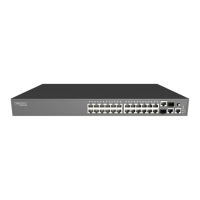
